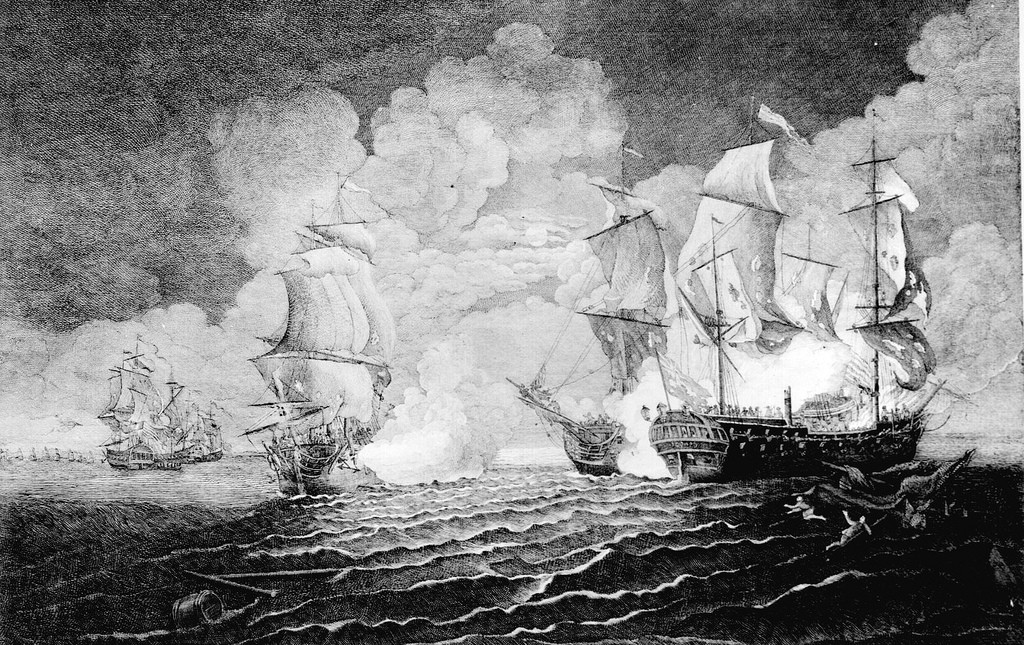In Harm’s Way: The Early Days of American Naval Power

Tim McGrath, Give Me a Fast Ship: The Continental Navy and America’s Revolution at Sea (New York, NY: Penguin Group, 2014)
“It follows then as certain as that night succeeds the day, that without a decisive naval force we can do nothing definitive, and with it, everything honorable and glorious.” — General George Washington to Gilbert du Motier, Marquis de Lafayette, November 15, 1781
When George Washington wrote this to Gilbert du Motier, Marquis de Lafayette, he was largely referring to the impact of the French fleet at Yorktown. Nonetheless, Washington was a consistent supporter of the Continental Navy and its fearless (and sometimes feckless) captains and crews. Tim McGrath’s book (no relation, sadly) provides a superbly researched and engagingly written narrative of how that navy developed, its bureaucratic travails, its great victories, and its crushing defeats.
I am not the first to describe the difficulty of holding the reader’s attention where naval history is concerned. There is something to being able to pile into the family minivan for a trip to a local battlefield, the videos at the visitor’s center, and the easily understood diagrams of terrain, force laydown, and movement. When reading about Gettysburg, Chancellorsville, or Yorktown, one can call upon the trips made there and the memories that remain, matching them with the words on the page in an effort to collocate with the action described therein. Such is not possible with naval battles great or modest, as the sea keeps secret what transpired on, above, and under its surface. To attain and maintain the reader’s attention, the naval historian must paint pictures more vivid than his land war counterpart, and in this effort, McGrath has excelled.
Give Me a Fast Ship is mainly the story of the Continental Navy, a force whose continuous manning and resource issues made the Continental Army look flush by comparison, as told through the tales of the derring-do of its captains. At times, following the flow can be difficult, as there were several navies at work during the American Revolution, including the Continental Navy, privateers, and individual colonial navies. Adding to the difficulty is the tendency of captains and crew alike to move from one force to another. McGrath does a good job of sticking with several of the heavyweights, some of whom are well-known heroes today and others, less so.
As a young man on the Norfolk waterfront, I was surrounded by these heroes whose names bedecked the ships of that time. I was not the inquisitive soul I am today, so unfortunately, it took the reading of this book to introduce me to the stories of the men behind the names on the ships: Barney, Barry, Biddle, Conyngham, Dale, John Paul Jones, Nicholson, Truxton, and Whipple. Of these, John Barry, John Paul Jones, and Gustavas Conyngham are particularly well treated in this book. Conyngham makes for a great story, a feared fighter who was nonetheless captured and imprisoned several times only to escape and take up arms again. As the present Navy casts about for names for its future warships, it could do worse than to revive the name “Conyngham” to symbolize fearlessness, grit, and determination.
McGrath’s treatment of John Paul Jones is superb, showing us the many sides of this complicated historical figure. A tactician of unequalled capability, Jones was not loved by his crews and became, after a time, an irritant to Benjamin Franklin in France, whose behind-the-scenes role in enabling the naval cooperation between the Continental Navy and the French Navy is a story unto itself.
Where McGrath is at his best is in his description of naval combat, beginning with the pursuit, moving to broadsides, to close aboard action, and finally to hand-to-hand combat. His telling of the Battle of Flamborough Head, for which John Paul Jones has become immortal, is epic. Jones’ 42- gun Bonhomme Richard defeated the Royal Navy’s 44-gun frigate, HMS Serapis, under the command of Captain Richard Pearson that day, with Jones capturing Serapis only to watch his own ship sink due to heavy damage. The carnage on deck was exceeded only by the carnage below decks, where surgeons worked themselves to exhaustion tending to victims maimed by all manner of weaponry. Jones’ skill as a tactician of sail is expertly described, especially the seizure of advantage gained by position and exposure to slight puffs of wind.
Superbly well written and fast moving, Tim McGrath has succeeded in bringing the Continental Navy to life in this fact-based and deeply researched volume. Written for the naval historian and neophyte alike, this book is highly recommended for those who seek a deeper understanding of the role of the Continental Navy in our nation’s founding, or for those who simply wish to “go into harm’s way,” if only in a literary sense.
Bryan McGrath is the Managing Director of The FerryBridge Group defense consultancy. He is the Assistant Director of The Hudson Institute’s Center for American Seapower, and is a Naval War College Adjunct Professor of Joint Military Operations.
Photo credit: Marion Doss

